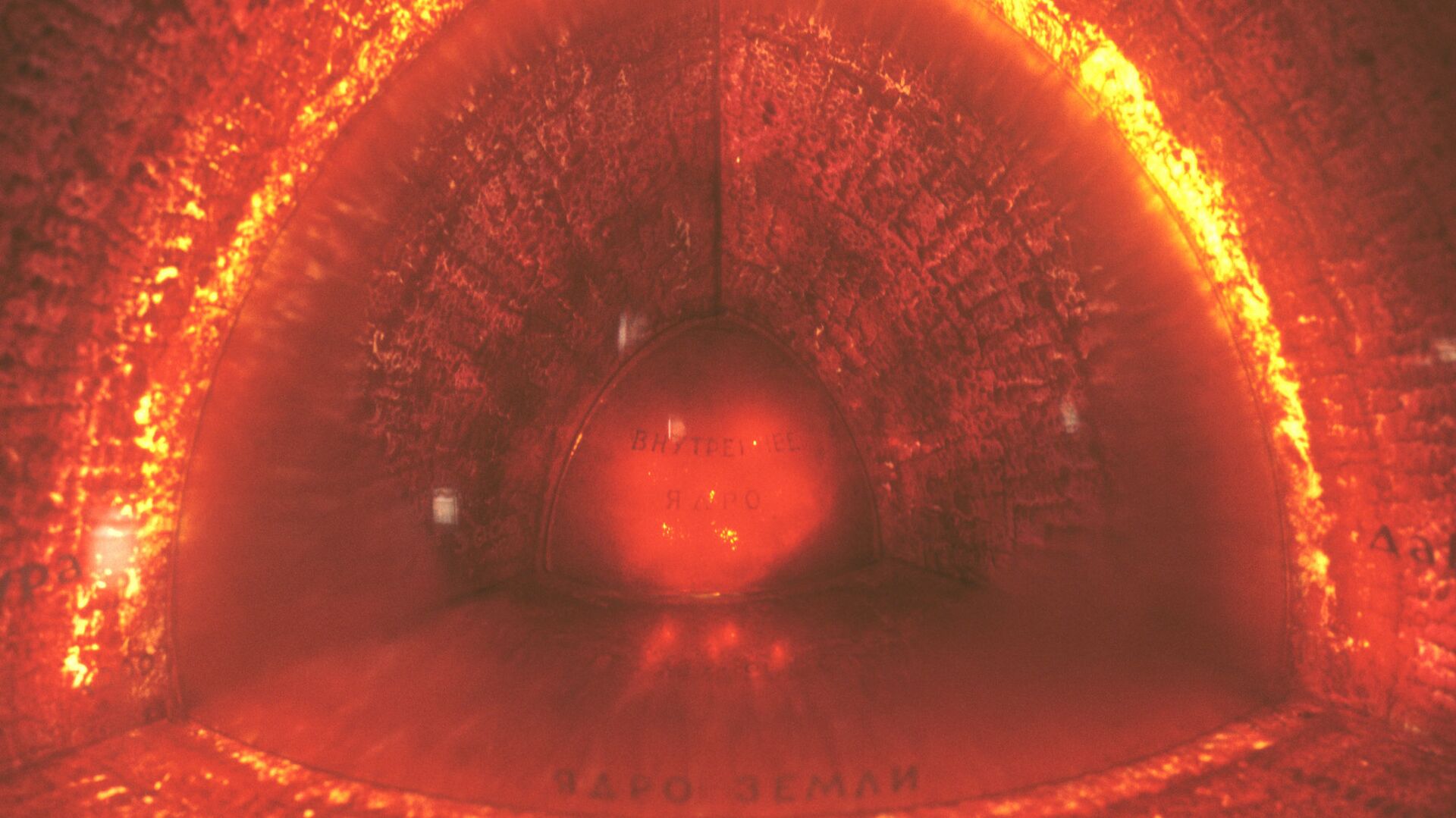https://sputnikglobe.com/20231006/hyperactive-atoms-have-made-earths-inner-core-softer---study-1113972803.html
Hyperactive Atoms Have Made Earth's Inner Core 'Softer' - Study
Hyperactive Atoms Have Made Earth's Inner Core 'Softer' - Study
Sputnik International
A new study suggests that the inner core's unexpected softness may be attributed to hyperactive atoms that move more freely within their molecular structure than previously thought.
2023-10-06T03:52+0000
2023-10-06T03:52+0000
2023-10-06T03:49+0000
beyond politics
science & tech
earth
atoms
inner core
https://cdn1.img.sputnikglobe.com/img/103935/56/1039355656_0:639:2004:1766_1920x0_80_0_0_4aa257c403c54152b932a126386ac900.jpg
A new study suggests the unexpected softness of the Earth's inner core may be attributed to hyperactive atoms that move more freely within their molecular structure than previously thought.Although the immense pressure at the heart of our planet led experts to believe the inner core must be solid, with its iron atoms forming an extensive hexagonal lattice, permanently fixed in position, new findings have raised an alternative explanation for the inner core's behavior.To explore the inner core's mysteries, researchers recreated its extreme pressure conditions in a laboratory setting. Officials closely observed the behavior of iron atoms under these circumstances and used computer simulations to construct a virtual core, which they dubbed the "supercell." The simulation effectively allowed scientists to witness how the supposedly rigid iron lattice could accommodate movement.The results proved astonishing, revealing that iron atoms within the inner core move much more freely than previously imagined. Some atoms were observed to shift in groups, rearranging themselves within the lattice without altering its overall structure—an effect akin to guests at a dinner table changing seats without adding or removing chairs, termed "collective motion."Moreover, the findings are expected to shed light on other enigmatic aspects of the inner core, such as its role in generating Earth's magnetic field. Lin stated, "now, we know about the fundamental mechanism that will help us with understanding the dynamic processes and evolution of the Earth's inner core."The study was published in the Proceedings of the National Academy of Sciences journal.
https://sputnikglobe.com/20230706/scientists-reveal-earths-inner-core-much-more-similar-to-tapestry-of-fabric--1111688548.html
earth
Sputnik International
feedback@sputniknews.com
+74956456601
MIA „Rossiya Segodnya“
2023
News
en_EN
Sputnik International
feedback@sputniknews.com
+74956456601
MIA „Rossiya Segodnya“
Sputnik International
feedback@sputniknews.com
+74956456601
MIA „Rossiya Segodnya“
earth, what is earth core like, what is earth core made of, is earth core liquid, is earth core solid, earth studies, is earth core soft, is is earth core hard, why is is earth core soft
earth, what is earth core like, what is earth core made of, is earth core liquid, is earth core solid, earth studies, is earth core soft, is is earth core hard, why is is earth core soft
Hyperactive Atoms Have Made Earth's Inner Core 'Softer' - Study
Scientists have long regarded Earth's inner core as an unyielding sphere of solid metal, primarily composed of iron and dating back over a billion years. Encased by the outer core, a swirling sea of liquid metals, and surrounded by a vast layer of molten rock known as the mantle, the inner core is situated beneath the Earth's solid crust.
A new study suggests the unexpected softness of the Earth's inner core may be attributed to hyperactive atoms that move more freely within their molecular structure than previously thought.
Although the immense pressure at the heart of our planet led experts to believe the inner core must be solid, with its iron atoms forming an extensive hexagonal lattice, permanently fixed in position, new findings have raised an alternative explanation for the inner core's behavior.
To explore the inner core's mysteries, researchers recreated its extreme pressure conditions in a laboratory setting. Officials closely observed the behavior of iron atoms under these circumstances and used computer simulations to construct a virtual core, which they dubbed the "supercell." The simulation effectively allowed scientists to witness how the supposedly rigid iron lattice could accommodate movement.
The results proved astonishing, revealing that iron atoms within the inner core move much more freely than previously imagined. Some atoms were observed to shift in groups, rearranging themselves within the lattice without altering its overall structure—an effect akin to guests at a dinner table changing seats without adding or removing chairs, termed "collective motion."
“Now, we know about the fundamental mechanism that will help us with understanding the dynamic processes and evolution of the Earth’s inner core,” said Jung-Fu Lin, a professor at the UT Jackson School of Geosciences and one of the study’s lead authors.
Moreover, the findings are expected to shed light on other enigmatic aspects of the inner core, such as its role in generating Earth's magnetic field. Lin stated, "now, we know about the fundamental mechanism that will help us with understanding the dynamic processes and evolution of the Earth's inner core."



